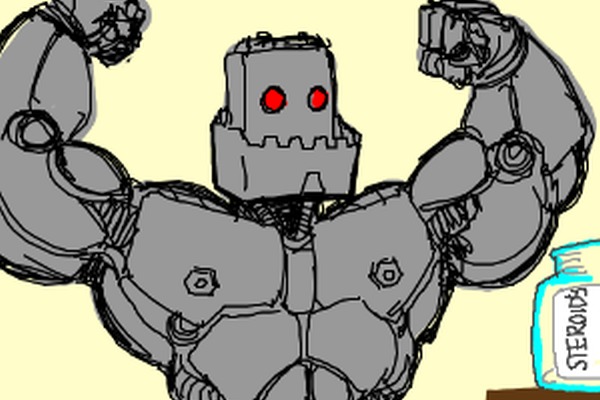Published on the 05/05/2021 | Written by Heather Wright

It’s a hot term, but what does hyperautomation mean for business?…
RPA, low-code, AI and virtual assistants are helping make automation of business processes big business in a post-Covid world, Gartner says.
The analyst firm says the worldwide market for technology that enables hyperautomation will reach US$597 billion in 2022, up 24 percent on 2020 figures. Across ‘mature Asia Pacific’ – which includes Australia and New Zealand – spend will increase from US$1.4 billion this year to US$1.7 billion in 2022, with CAGR out to 2025 tipped at 17.4 percent.
Driving that demand is a ‘strong’ need for digital transformation and automation of business and IT processes, Gartner says, with research vice president Fabrizio Biscotti declaring that hyperautomation has ‘shifted from an option to a condition of survival’.
“Organisations are transitioning to a more-connected automation strategy.”
Automation, never mind hyperautomation, remains a hot category with Gartner, among others, forecasting strong growth in the coming year. In Gartner’s case, it has forecast RPA itself to see 19.5 percent growth in software revenue this year. McKinsey, meanwhile, says available automation technologies can already operate a typical retail grocery store with up to 55 to 65 percent fewer hours.
(If you want proof of how hot the automation market is, take a look at the recent UiPath IPO. It closed in late April having raised more than US$1.3 billion, giving it an initial market capitalisation of $29.1 billion. Its initial plans were to raise up to US$1 billion.)
Hyperautomation, however, takes automation to the next level.
Unlike automation, hyperautomation – or to use Forrester’s term, digital process automation, or intelligent process automation (IDC’s term) – combines complementary technologies to augment business processes and deliver end-to-end automation beyond RPA. But it’s not just about the tools, but also the sophistication of the automation. Business-driven hyperautomation, Gartner notes, not a market, per se, but an approach to automating work that is enabled by a set of technologies.
It’s an approach, Gartner says, that enables organisations to rapidly identify, vet and automate as many processes as possible using technology, such as RPA (robotic process automation), low-code application platforms, artificial intelligence and virtual assistants – largely process-agnostic software that can be used across multiple IT and business use cases.
Gartner is forecasting the drive towards hyperautomation will lead organisations to adopt at least three out of the 20 process-agnostic types of software that enable hyperautomation by 2024.
And the payoff? According to Gartner, organisations will be able to lower operational costs by 30 percent by combining hyperautomation technologies with redesigned operational processes.
“Organisations are transitioning from a loosely coupled set of automation technologies to a more-connected automation strategy,” says Cathy Tornbohm, distinguished research vice president at Gartner.
In response, vendors are developing integrated offerings that combines technologies like RPA, LCAP and business process management into one, packaged tool. SAP has launched integrated business process software, including RPA, Microsoft launched its Power Automate RPA solution with its Power Apps low-code and workflow applications and Appian has launched RPA software and partnered with UiPath, Automation Anywhere and Blue Prism. Meanwhile while IBM has launched a combination of automation tools, Oracle has partnered with several RPA vendors and Pegasystems also provides an integrated BPM RPA solution.
Gartner says tools that provide visibility to map business activities, automate and manage content ingestion, orchestrate work across multiple systems and provide complex rule engines will be the fastest growing hyperautomation-enabling software category.
Technologies to automate content ingestion, such as signature verification tools, optical character recognition, document ingestion, conversational AI and natural language technology (NLT) will be in high demand. Organisations will need such tools to automate the digitalisation and structuring of data and content – for example, automating the process of digitalising and sorting paper records,” Gartner says.
“Of course, a vast combination of other software is used to automate work, such as ERP, supply chain and CRM, which is set to reach US$813 billion, with a compound annual growth rate (CAGR) of 12 percent from 2020 through 2025,” the report notes.
When it comes to low-code’s role, Gartner notes that companies are investing in low-code technologies that focus on supporting innovation and integration in their applications by reassembling capabilities as needs change across the business.
“Low-code technologies are already solving the composable enterprise requirements through built-in integration features, rapid application development, and enablement of citizen and business unit developers. In addition, low-code technologies for business process automation are efficiently enabling the development of new business processes,” the Gartner report, Forecast Analysis: Hyperautomation Enablement Software Worldwide, says.
“Meanwhile, vendors are advancing their runtime capabilities to remove possible IT objections around scalability, while quality and security are generally considered as sufficient to excellent for most mainstream low-code vendors.”
Globally, hyperautomation is already bringing change to many sectors, including finance and healthcare. In the US intelligent automation is being used to automate the eligibility verification process of the Affordable Care Act health insurance program, which processes tens of millions of consumers annually. AI-enabled data capturing tools are used to extract data at scale, while analytics capabilities monitor the processes and workflows.
Gartner’s report flags healthcare as a key market out to 2025, with CAGR of 21.5 percent, followed by government at 20.8 percent. Manufacturing and natural resources, communications and media services and banking and securities are all hot to trot too, logging CAGR of 18.4, 18.0 and 17.7 percent respectively.
Hyperautomation was included in Gartner’s Top 10 Strategic Technology Trends for 2020. Come early this year, and the company was touting automation as a new source of competitive advantage and disruption, and recommending CIOs view hyper automation ‘as a principle, not a project as they move forward in updating their processes for the future’.



























